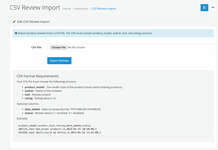Understanding User Intent and Search Engine Evolution
Search engines are smarter than ever. They now prioritize content that truly helps users instead of relying on outdated tactics like keyword stuffing. This means focusing on what people want to know, not just sprinkling keywords onto a page.
Advances in AI-driven algorithms, such as semantic search and Google’s BERT update, have reshaped how search engines understand queries. These tools now assess context and meaning, making pairing users with relevant information easier. The focus has shifted from the what—specific phrases users type—to the why—the underlying reason for their searches.
For example, someone searching for “how to fix a leaky faucet” isn’t just entering keywords—they’re seeking practical, step-by-step advice. Content that aligns with these needs has a better chance of ranking well and being useful.
Matching Content to Search Intent Categories
Each search query falls into a specific intent category. By identifying this intent, you can tailor your content to give users exactly what they need. Here’s a breakdown of common search intents and how to align your content:
Informational Intent
- What it is: Users want to learn about a topic.
- Examples: “How does solar energy work?”, “What are the benefits of meditation?”
- Content Approach: Create detailed guides, explainer articles, or FAQs. For example, a headline like “The Basics of Solar Energy Explained Simply” signals clear, helpful content.
Navigational Intent
- What it is: Users are looking for a specific brand, website, or resource.
- Examples: “Facebook login,” “YouTube tutorials,” “NY Times homepage.”
- Content Approach: Ensure your website is optimized for branded terms and has clear landing pages to guide users quickly to their goal.
Transactional/Commercial Intent
- What it is: Users are ready to take action (make a purchase, download, sign up).
- Examples: “Buy noise-canceling headphones,” “Cheap flights to NYC.”
- Content Approach: Use product reviews, comparisons, and CTAs (calls-to-action) to guide purchasing decisions. Content like “Top 5 Affordable Noise-Canceling Headphones in 2023” works well.
Investigative Intent
- What it is: Users are comparing products, services, or researching before purchasing.
- Examples: “Best laptops for video editing,” “Tesla Model 3 vs. Model Y.”
- Content Approach: Include in-depth comparisons, pros-and-cons lists, or expert reviews. Make the information easy to scan with tables or bullet points.
Content mismatching user intent can frustrate visitors, increasing bounce rates and losing conversions. Businesses that succeed, like those using St George SEO, often merge intent analysis with local and industry-specific knowledge to make their content more useful and relevant.
Keyword Research with Intent at the Core
Effective keyword research goes beyond volume and competitiveness. It’s about uncovering the why behind every query. Here are some tools and strategies to pinpoint intent-driven keywords:
- AnswerThePublic: Discover commonly asked questions tied to keywords.
- Competitor Gap Analysis: Identify content gaps by examining competitors’ rankings. Use tools like SEMrush or Ahrefs to spot opportunities.
Look for Long-Tail Keywords
Phrases like “how to save money on groceries in winter” reveal highly specific user needs. Long-tail keywords often hint at informational or investigative intent and attract more qualified traffic.
Context Matters
Never assume intent without considering context. For example, “best restaurants” could mean affordable options to one user or luxury dining to another. Looking at location and session cues, like time of day or device type, can help refine this understanding.
Creating Content That Builds Trust, Not Just Traffic
Driving clicks is one thing; keeping users engaged is another. Thoughtful content builds authority and trust by genuinely answering questions.
- Cite Credible Sources: Back up claims with links to well-known websites, studies, or expert opinions.
- Use Step-by-Step Guides: Detailed instructions help users take action confidently for how-to topics.
- Address Counterarguments: Acknowledge alternative viewpoints to show thorough research.
Improve Readability
Make your text easy to consume:
- Write short paragraphs (2-4 lines).
- Use headings and subheadings to organize sections.
- Avoid technical jargon unless necessary (and explain it when used).
Example Formats That Engage Users
- FAQ Sections: Anticipate and answer the most common questions.
- Comparison Tables: These simplify decisions by laying out details side-by-side.
Adding Value Beyond the Search Box
Once users click on your content, value-added features can enhance their experience and encourage further engagement.
- Internal Linking: Guide users to related content on your site. It increases session duration and helps visitors find more useful material.
- Multimedia Enhancements: Use videos, infographics, or interactive tools to break up text and improve understanding.
- Interactive Features: Calculators, quizzes, or product finders can make the experience more personalized and memorable.
Refining Through User Behavior
Analyze post-visit actions, such as:
- Heatmaps: Identify which page elements users focus on.
- Session Recordings: Observe how visitors interact with your site.
Update based on user activity. For example, if visitors click a button that doesn’t lead to anything useful, adjust the link or text for clarity. Keeping content evergreen—refreshing it with updated statistics or examples—ensures it remains valuable over time.
Practical Steps for Ongoing Success
To create content that continuously meets user needs, follow these core practices:
- Perform quarterly intent audits to check if content matches user goals.
- Regularly A/B test headlines, meta descriptions, and CTAs for better conversions.
- Monitor new opportunities to appear in featured snippets or answer boxes.
- Use analytics to identify underperforming pages, then refine their structure or content.
Professionals often combine nuanced intent analysis with technical know-how to create sustainable strategies that adapt to search engine updates and user behavior.
By staying proactive, content creators can position themselves for future success. The next wave of search will reward those who answer real questions at the heart of their strategy. Keep focusing on value, and results will follow.







Investigative intent when creating content